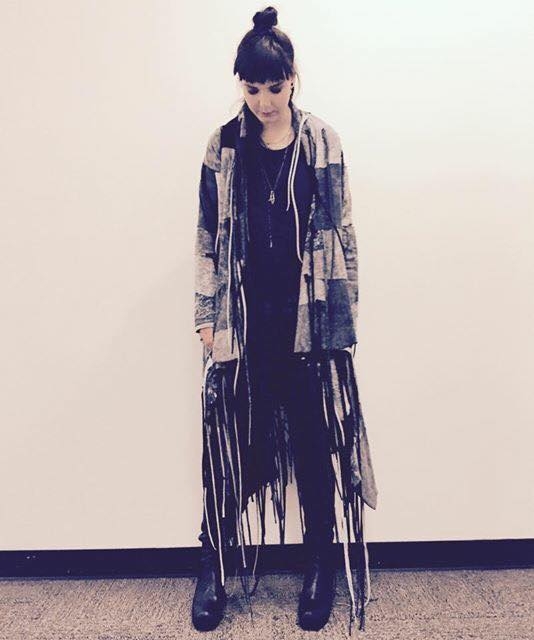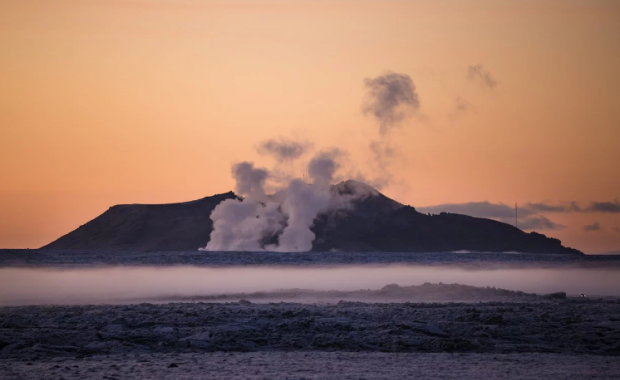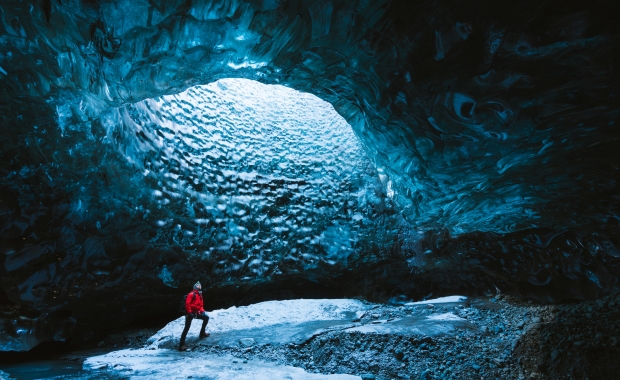Icelanders have been considered rather fashion-forward by many, but few designers are as bold and progressive as Bára Hólmgeirsdóttir, the founder and mastermind behind the fashion brand Aftur. The company celebrated the slow-fashion ideology long before the term was coined, and is a favourite among environmentally conscious fashionistas. The brand name, Aftur, means “again,” and expresses the company’s ideology: to recycle and upcycle old textiles so that they can be used again.
Bára founded the brand in 1999 with her sister, stylist Hrafnhildur Hólmgeirsdóttir, when they worked as buyers for numerous vintage fashion stores in Reykjavík.
“Through our jobs as buyers we’d come across heaps of beautiful, quality textiles that were just lying around, unused. Also, the fashion trends at the time were not to our taste or liking, so we felt that by upcycling textiles we could justify creating new clothes despite the piles of existing clothes,” Bára explains.
Buy less and better
The sisters began creating unique designs that coincided with their ideology, and soon enough, the trend caught on with Reykjavík’s fashionistas. “We don’t do seasons because we want people to buy less and better. By avoiding seasons in fashion you slow down over-consumption and the race to always have the latest trends.”
Internationally acclaimed artists such as Björk and Sigur Rós have worn Bára’s designs during world tours.

“Hrafnhildur worked as Björk’s stylist for one of her world tours and together we created numerous different looks for her. I also designed costumes for Jónsi’s [Jón Þór Birgisson of Sigur Rós] solo tour and Sigur Rós’s last world tour. Most recently I designed a few pieces for OMAM [Of Monsters and Men].”
Bára says most Icelandic musicians are very willing to wear and promote Icelandic design abroad, and she enjoys creating wild, attention-grabbing outfits for the stage.
“It allows you to go a bit wild in your designs, which is always a pleasure. And in some ways it keeps you on your toes, because you begin to experiment more, which can often lead to new ideas.”
Experimental fashionistas
According to Bára, Aftur has gained a faithful group of customers over the years. “Most of my customers are Icelandic. After having lived abroad, I find Icelanders to be very experimental when it comes to fashion. Yes, they wear a lot of black, but you can never have too much black,” she says, giving a little laugh. “Iceland has seen a huge increase in foreign tourists in the past decade, and so has my store. But I also have a small number of foreign regulars that visit the store every time they come to Iceland.
Bára admits that the idea of branching out and beginning to sell her designs abroad has crossed her mind. “Things here happen very organically, and up until now I’ve been happy to focus solely on my little store in Reykjavík. But lately, I’ve been thinking about stepping out of my comfort zone and setting up a Webshop, and am even looking into boutiques abroad that want to carry my designs,” she concludes.
Icelanders have been considered rather fashion-forward by many, but few designers are as bold and progressive as Bára Hólmgeirsdóttir, the founder and mastermind behind the fashion brand Aftur. The company celebrated the slow-fashion ideology long before the term was coined, and is a favourite among environmentally conscious fashionistas. The brand name, Aftur, means “again,” and expresses the company’s ideology: to recycle and upcycle old textiles so that they can be used again.
Bára founded the brand in 1999 with her sister, stylist Hrafnhildur Hólmgeirsdóttir, when they worked as buyers for numerous vintage fashion stores in Reykjavík.
“Through our jobs as buyers we’d come across heaps of beautiful, quality textiles that were just lying around, unused. Also, the fashion trends at the time were not to our taste or liking, so we felt that by upcycling textiles we could justify creating new clothes despite the piles of existing clothes,” Bára explains.
Buy less and better
The sisters began creating unique designs that coincided with their ideology, and soon enough, the trend caught on with Reykjavík’s fashionistas. “We don’t do seasons because we want people to buy less and better. By avoiding seasons in fashion you slow down over-consumption and the race to always have the latest trends.”
Internationally acclaimed artists such as Björk and Sigur Rós have worn Bára’s designs during world tours.

“Hrafnhildur worked as Björk’s stylist for one of her world tours and together we created numerous different looks for her. I also designed costumes for Jónsi’s [Jón Þór Birgisson of Sigur Rós] solo tour and Sigur Rós’s last world tour. Most recently I designed a few pieces for OMAM [Of Monsters and Men].”
Bára says most Icelandic musicians are very willing to wear and promote Icelandic design abroad, and she enjoys creating wild, attention-grabbing outfits for the stage.
“It allows you to go a bit wild in your designs, which is always a pleasure. And in some ways it keeps you on your toes, because you begin to experiment more, which can often lead to new ideas.”
Experimental fashionistas
According to Bára, Aftur has gained a faithful group of customers over the years. “Most of my customers are Icelandic. After having lived abroad, I find Icelanders to be very experimental when it comes to fashion. Yes, they wear a lot of black, but you can never have too much black,” she says, giving a little laugh. “Iceland has seen a huge increase in foreign tourists in the past decade, and so has my store. But I also have a small number of foreign regulars that visit the store every time they come to Iceland.
Bára admits that the idea of branching out and beginning to sell her designs abroad has crossed her mind. “Things here happen very organically, and up until now I’ve been happy to focus solely on my little store in Reykjavík. But lately, I’ve been thinking about stepping out of my comfort zone and setting up a Webshop, and am even looking into boutiques abroad that want to carry my designs,” she concludes.







